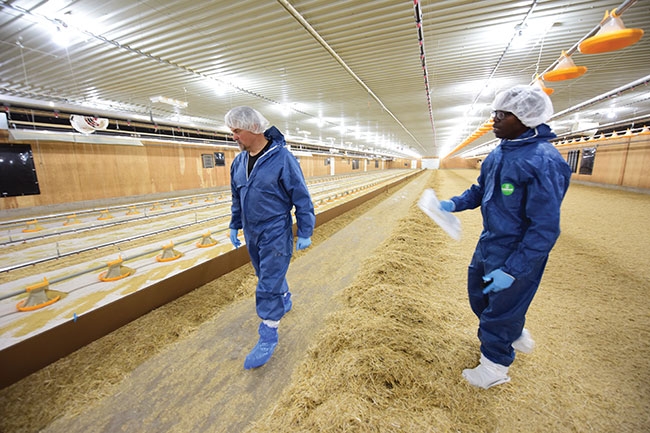
Adjusting to reduced antimicrobial use
By Gbenga Alade
Features Broilers HealthOur new normal and the right thing to do.

Chicken Farmers of Canada (CFC)’s antimicrobial use reduction strategy is well thought out and ideally paced. This is evidence of the strong leadership that continues to elevate the importance of responsible use of antibiotics in animal agriculture.
This is despite reports surmising that more than half (59 per cent) of antimicrobials used in broiler chickens were in classes not used in human medicine, such as ionophores and chemical coccidiostats used to prevent coccidiosis.
The CFC strategy is a three-step process towards the elimination of preventive use of all antibiotics considered important in human medicine. The first and second steps are already completed with the elimination of preventive use of Category I (those most critical to human health) and Category II antibiotics in 2014 and 2018 respectively.
Thankfully, it is well-recognized that the therapeutic use of antibiotics, under the guidance of a veterinarian, must always be an option to prevent potential adverse animal health and welfare outcomes. We must continue to strike a disciplined and educated balance between human health considerations and the welfare of the birds in our care.
Chicken farmers are working alongside veterinarians to administer antibiotics in animals for three main reasons. Firstly, to treat an illness that has been diagnosed. Secondly, to control the spread of illness in a flock. And lastly, for the prevention of an imminent illness in a flock at risk of exposure.
I understand that the reduction of antibiotics can potentially introduce challenges, which Ontario’s farmers have recently met with mettle. Some of the challenges that have been reportedly associated with reduction or elimination of antimicrobial use include increasing disease burden, especially necrotic enteritis and coccidiosis, as well as an increased feed cost associated with alternative products required in cases where antibiotics are eliminated or reduced.
As always, with challenges we also look for opportunities to rethink how we have previously practised raising broiler chickens. We can learn a lot from jurisdictions that are further ahead in the antimicrobial reduction journey and from farmers within Ontario that have experienced positive production in the reduced antimicrobial environment.
Two common factors and messages emanate from these groups: It is achievable and the right thing to do; and there is no single solution that will replace the antibiotics that are eliminated.
Farmers and industry partners that have experienced success in a reduced antibiotic environment stress the importance of paying keen attention and taking care of every little detail that involves management of the birds. That includes, but is not limited to, paying close attention to water and feed consumption, the barn environment and optimum biosecurity that will potentially reduce challenges brought on by disease-causing organisms.
In addition, practices such as optimizing downtime and reducing bird density have been shown to be good tools in a reduced antibiotic environment. A holistic approach that leverages development of a flock health plan and working closely with a veterinarian to ensure early detection and treatment of a flock illness will go a long way to ensure success.
Farmers are not left to bear the burden alone. Government and industry stakeholders, including the research community, are driven to look for solutions by targeting meaningful work that will benefit farms and birds in this reduced antibiotic environment.
We cannot lose sight of the fact that this is all about public health. As farmers, doing all that we can to lessen the potential impact of antimicrobial resistance makes the journey worthwhile.
References
- Agunos A. et al- Antimicrobial use surveillance in broiler chicken flocks in Canada, 2013-2015 https://journals.plos.org/plosone/article?id=10.1371/journal.pone.0179384
- Joanna Karavolias et al, Raised without antibiotics: impact on animal welfare and implications for food policy https://www.researchgate.net/publication/326959143_Raised_without_antibiotics_Impact_on_animal_welfare_and_implications_for_food_policy
- Jackie Roembke, Antibiotic reductions, eliminations post ongoing challenges http://www.feedstrategy-digital.com/201903/index.php#/12
Gbenga Alade is manager of veterinary services at Chicken Farmers of Ontario (CFO). A certified veterinarian with over 10 years of experience in Canada and Nigeria, Alade’s work includes planning and managing CFO’s implementation of CFC’s AMU reduction strategy.
Print this page